DAY 11 - Jægerspris Castle - Wedneday 4th May, 2022
Day 11 saw us visit the Jaegerspris Slot.
Jægerspris Castle on te Hornerred peninsula is a Danish manor houe. It has belonged to the Danish monarch for most of its history which dates back to the 13th century. In the 1850s it became a retreat for King Frederik VII and is morganatic wife Countess Danner, who sought refuge there to escape the controversy their marriage had caused among the establishment in Copenhagen. After the king's death, Countess Danner turned it into an asylum for woman. Today the castle serves as a historic house museum and is also noted for its park...
 |
| Jægerspris Castle |
We arrived at
10am and found that the Castle itself didn’t open until 11am so spent the next
hour wandering around the gardens and woods attached to the castle.
Everything is so green and the spring wild flowers were prolific. There were a number of things of interest in the park/forest. .
The
grounds of Jaegerspris castle are wooded with many walks.
In the years around 1770 the sculptor Johannes Wiedewelt erected a large number of monuments which are spotted around the woods. They are monuments to various historical famous Danes although no explanations (in Danish or English) as to who they were and what they are famous for is given. There are 54 of these monuments in the park and the adjacent forest, Slotshegnet.
The park also contains Countess Danner's burial mound and Herman Wilhelm Bissen's bust of Frederik VII.
The large oak trees in the southern section of the park were planted by Frederik V to ensure the availability of timber for naval construction. To the north there are avenues of lime trees In the years around 1770 the sculptor Johannes Wiedewelt erected a large number of monuments in the park commemorating famous Danish and Norwegian men and women. There are 54 monuments in the park and the adjacent forest, Slotshegnet. We enjoyed wandering around and checking out a lot of thee monuments. There were many more that we just didn't have time to check out...In the castle park we also came across the Countess Danner's marble coffin, which is located in a burial mound, which is open at the side.
There are also three rune
stones, that originate from the island of Funen, which were brought to this beautiful
castle park by King Frederik 7 who took a great interest in archaeology. They
are located at Countess Danner’s burial mound. Two of the stones, Flemløse I
and II, mention a "Roulv from Helnæs. Here is also Danneregen, which is
a graft of Denmark's oldest tree, Kongeegen. We have found the history really interesting, That is one of the bonuses of travel, you learn so much that you wouldn't otherwise research. Seeing new places and hearing about the history intrigues me and makes me want to find out more about these new places.
 |
| Count Danner's marble coffin... |
 |
| Wildflowers everywhere |
 |
| We came across more monuments |
 |
| Views of Jaegerpris Castle from the castle parklands... |
By now it was close to opening time for the castle so we decided to head back towards the castle checking out the forest behind the castle first. This whole area is beautiful there were wild spring flower out everywhere and we were so enjoying being out in nature this beautiful.. We were also enjoyed the beautiful sunny day too..
 |
| Loving all the wildflowers growing everywhere... |
Heading behind the brick fence at the back of the castle we came across a small cemetery. Initially the graves we came across seemed to be a few hundred years old but as we walked around it more we discovered that the cemetery there is still used today.
 |
| An abundance of these little wildflowers |
We also came across a cemetery and found it interesting to read the tombstones. Each grave is set out in it’s own little garden where plants are planted and decorated. Also we found that most of the tombstones were actually rocks and peoples details were engraved into them. Very interesting. We enjoyed our day here.
One of the differences in cemeteries over here is that the tombstones are all very different... Some are actual headstones, others are engraved onto actual rocks, wood and each little grave is often in a hedged area and are little gardens, with beautiful flowers or shrubs growing there. Cemeteries here are pretty places and very peaceful places. We also noticed that a lot of the churches or kirkes as they are all also all have cemeteries attached to them...
 |
| A rather unusual tombstone with fancy font... |
 |
| Here a slab or rock was used as a headstone... |
 |
| Each plot has it's own little garden |
From the cemetery we wandered back through the lovely gates and back into the backyard of the castle, again the gardens here are beautiful and we watched a group of children playing on the lawn.. The students were quite friendly and sang out to us. When they realized that we only spoke English and not Danish it made them even more inquistive and they wanted to know where we were from. We informed them that we were Australian and they wanted to know more about where we came from. The male teacher came over to check on them particularly as they were talking to strangers and he was able to tell us that the back of the castle is now used as a school and these two girls were from the school. We had an interesting conversation with them wanting to know more about Australia and u in turn asking them about the castle and what it is used for today..
Again we were amazed at the beauty of the forest here with all the wildflowers growing on the floor of the forest and also the parklands..
 |
| beautiful beautiful wildflowers |
 |
| The back of the castle... |
 |
| Wildflower everywhere....you can see we can't get enough of them... |
 |
| Love this photo... |
 |
| Carpets of wildflowers |
 |
| Palace gardens |
After talking to the students we continued our wander around the gardens and then headed back to the front of the castle. By the time we did this we had completely encircled the castle and came across a castle tower and courtyard which we also explored. I only wish we could have found out a little more about it all.
We did however learn that the construction of Jægerspris Castle began in the 13th century, but little is preserved from the Medieval times. Jægerspris Castle lost its military importance in the 16th and 17th centuries, but unlike other military fortification of the time it was reconstructed to serve as a hunting lodge.
Until 1677 the estate was known as Abrahamstrup. It is not clear who Abraham was but the name is believed to be a reference to King Valdemar II's son Abel since most of Hornsherred in the 12th century was owned by the king. A source from 1318 refers to the estate as land belonging to the Crown.
In 1673 the castle passed into private ownership when it was acquired by jægermester Vincents von Hahn. In 1677 he renamed it Jægerspris, which literally translates to Hunter's Praise.
In 1679, the castle passed back into royal ownership and shortly after Frederick IV's ascent to the throne in 1699, he used it as a summer residence for a few years but then gave it to his younger brother Prince Charle of Denmark in 1703. Prince Charles carried out a comprehensive expansion and rebuilding of the castle. The south wing was extended with an extra storey and the single, square guard tower of the southern facade of the castle was given a twin tower to the east to add symmetry to the building. Several buildings associated with the forestry and agricultural operations of the estate were also built on the grounds. They included a pheasantry and a stud farm. The adaptions of the castle were completed in 1722.
 |
| Guard tower |
After Prince Charles' death in 1729, Crown Prince Christian VI took over the estate. The castle continued to serve as a hunting lodge for the Danish monarchs until it was ceded to the Danish state in 1849 in connection with the adoption of the Danish Constitution.
King Frederik VII acquired Jægerspris Castle on 21 April 1854, on the birthday of his wife Countess Danner. Their marriage had caused a lot of controversy back in Copenhagen as it was a morganatic or an union between two people of unequal social status. Countess Danner was a ballet dancer and a singer before she was the spouse of a monarch and this caused a lot of public scolding and hate. The king therefore bought the castle as a place to spend their private life, away from the controversy their liaison had caused back in Copenhagen. They carried out a major renovation of the castle assisted by the architect Johan Henrik Nebelong.
How different the times are today.. Denmark's current Crown Prince married a commoner, Mary McDonaldson all the way from Australia. You really couldn't get much more morganatic than that. Fortunately the Danish people love their Crown Princess Mary.
After
Frederick's death in 1863, Countess Danner lived a discreet life there. In 1866 she
opened part of the castle to the public as a historic house museum where everything
was left exactly the way it was, thus commemorating the popular king and their
lives together.
 |
| Bust of Frederik VII - by Herman Wilhelm Bisen |
In 1873, she founded the Frederick VII's Foundation for Poor Women from the Working Class, and the house was called "The Danner House". On her death, she left Jægerspris Castle "to the benefit of poor and destitute servant girls".
Jægerspris Castle is now a muesum and the admission charge wasn't that expensive. Cost was 55krone per adult which worked out at $11Au each. The museum first opened in 1866, three years after the Kings death, Countess Danner opened parts of the castle to the public. She wanted the living rooms to stand as an eternal memory for posterity about the beloved king.
In the museum you can see the memorial rooms with the audience's silk wallpaper and beautiful stucco ceiling, reliefs of Thorvaldsen, the king's work room with the impressive pipe collection and the large oil painting of Countess Danner in the wedding dress painted in 1850 by David Monies.
The memorial rooms at Jægerspris Castle are thus the only place in Denmark where the 1850's interior decoration can be experienced in a unified whole.
In addition, you can see the tower room with the old golden leather tapestries and the king's fishing rod, the newsroom with the king's magnificent weapons collection and many of the precious things that the king had inherited from his ancestors, as well as the corridor with the royal hunting trophies and paintings of the Oldenborg kings.
 |
| Countess Danner in her wedding dress |
From here we headed upstairs to see the rest of the museum.
The first room we went into on the top level was an art gallery displaying a collection of paintings. Mostly they were of the area and contained both modern and still works. Some were very interesting and then we got to check out the Countess Danner's sitting room. Whilst Jaegerpris isn't as fancy as some of the other castles we have been too, it was definitely worth the $11 entrance fee and I would certainly recommend it to others in Denmark.
We found out that the Countess Danner decided in her will that her cabinet should be left untouched after her death. The living room with the beautiful yellow silk-covered furniture with the county's monogram was opened to the public in 1874. In an adjoining room is told about Louise Danner's many journeys.
They also had a display of the orphanage that the Countess Danner ran after the passing of her prince. It was all very interesting...
The ceiling in the entrance was really nice, it represented a stary sky. I am loving the history of these places. We have nothing like it back home, our country is too new...
 |
| Blue bells |
It was closer to 2pm by the time we had finished going through the castle and we were both feeling quite hungry. We decided to check out the cafe on the grounds and have a bite to eat there. It was a nice little cafe and seemed pretty popular with not only the tourists but a lot of the locals also. The other thing about this cafe is that they only had wholesome food, all natural juices and freshly grown food. It was nice but not the nicest that we have had and it really was quite expensive. We decided to get a drive each and share the main meal. The bulk of the meal was a carrot salad which didn't overly impress us. Also the meal wasn't that big. Normally we can share a meal and both feel satisfied, this meal left us looking for more which is probably why we stopped off for ice creams on our way home...
It was well and truly mid afternoon by the time we left the castle. We decided to stop at the lovely ice cream stall that we had ice cream with Maria and the children the previous day to have another ice cream since they were so good, and ice cream in Denmark in Summer is a big thing. Mind you the weather still felt like winter to us as back home our winters are often milder than the temperatures we have had here since we have been here.We both opted for Rum and Raisin ice creams again but both of us only had single ice cream cones today rather than the double that Steve had the previous day. Again we sat across the road and ate them in the picnic area. We were joined by lot of others enjoying their ice creams also. This place is very popular.
Once we had finished out ice creams we decided to go for a drive through the forest close by to try and find the oldest oak trees in Denmark and possibly northern Europe. A couple of these trees were over 2000 years old.
We didn't end up managing to find them in the end, as apparently you had to walk a few kilometres into the forest and our legs were tired and sore from all the walking we had already done around the park and the castle earlier in the day..
The drive though through the forest was stunning. We loved it. Danish people are very selective when logging and you can barely tell that the trees have been taken from the forest, the only evidence you see is the pile of logs that lay on the side of the road. It is totally different here to the way we log in Australia and the way they log in Norway where vast areas of land are left barren from logging...
 |
| Beautiful drive through the forest. |
 |
| More of the monuments from the parklands around Jaegerspris Castle |
 |
| Large piles of loads on the side of the road... |
 |
| Huge piles of logs and yet there is no evidence they have been cut down |
We decided to take a new route home today, different scenery and headed back over the old bridge and the back of Frederikssund and down through the street out chiropractor is located. The trees take our breath away as they are all out in bloom at the moment.
 |
| The trees are stunning when they are all out in bloom |
We couldn't resist stopping on our way home and taking a photo of the footpaths around where Pete and Maria are living. I am sure the Danes don't appreciate them as much as we do as these are all flowering dandelion and they look stunning. A few days later, someone had come through and mowed and they were all gone. So thankful we took the photo when we did...
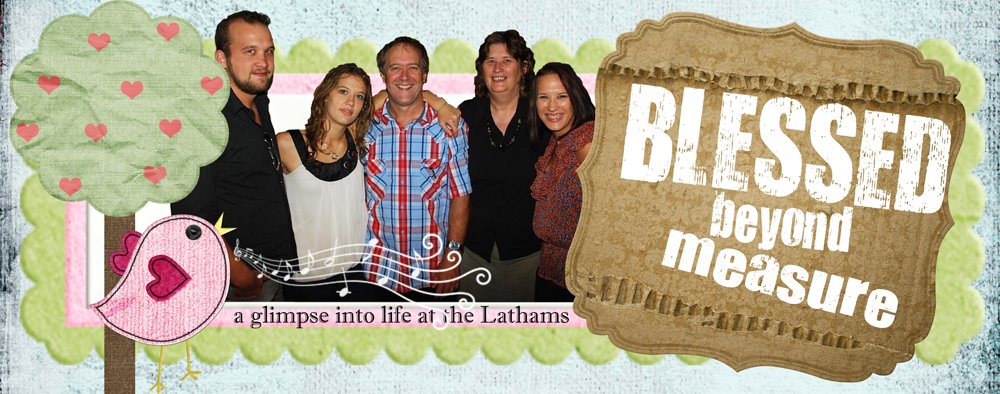



























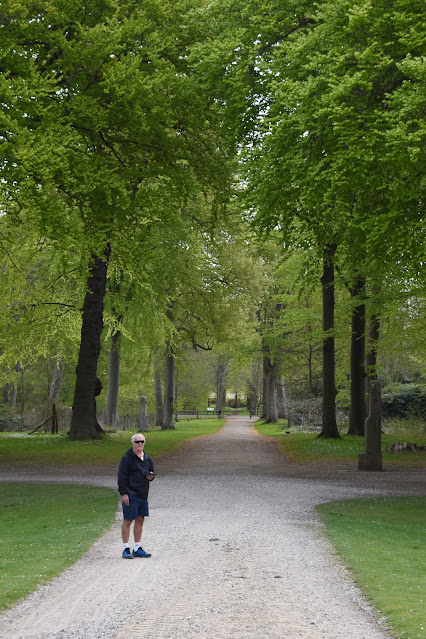




























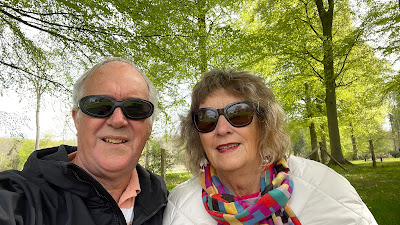





















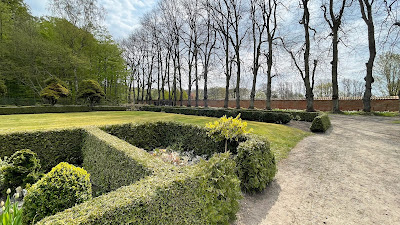




















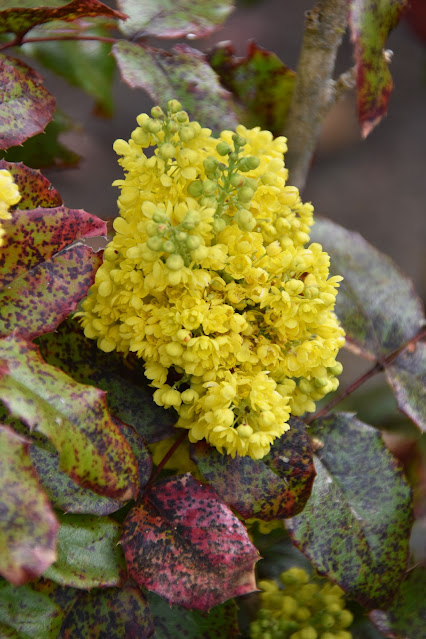










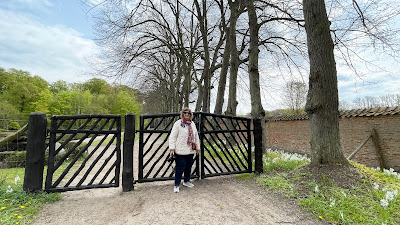














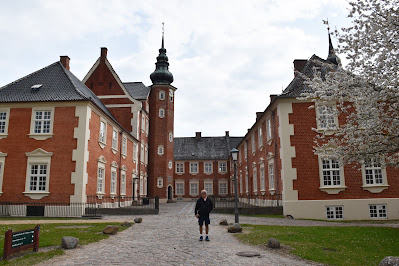
































































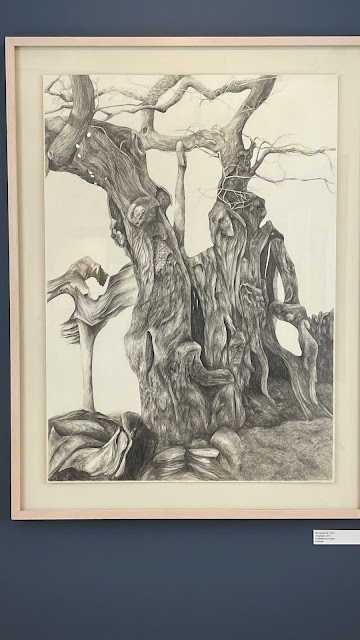



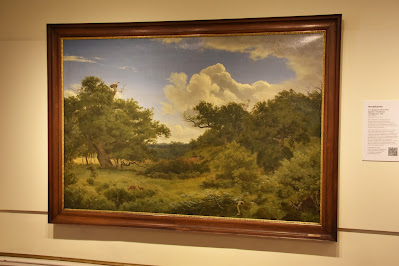












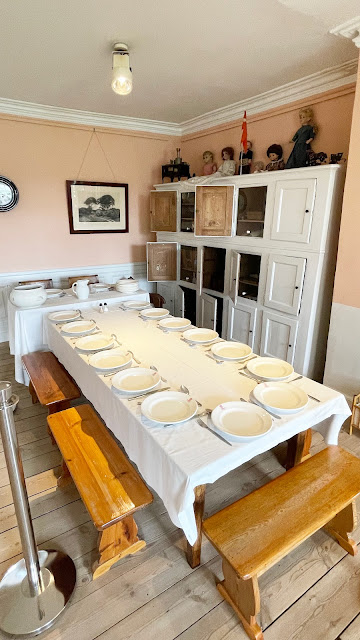






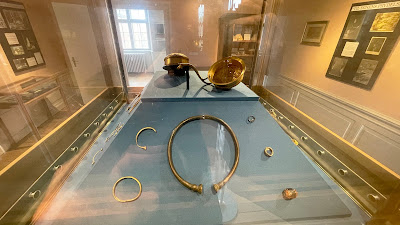

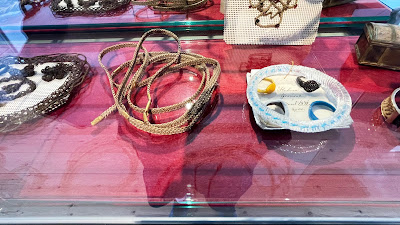

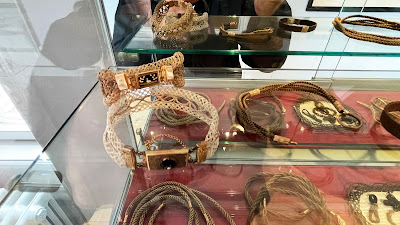























































0 comments:
Post a Comment